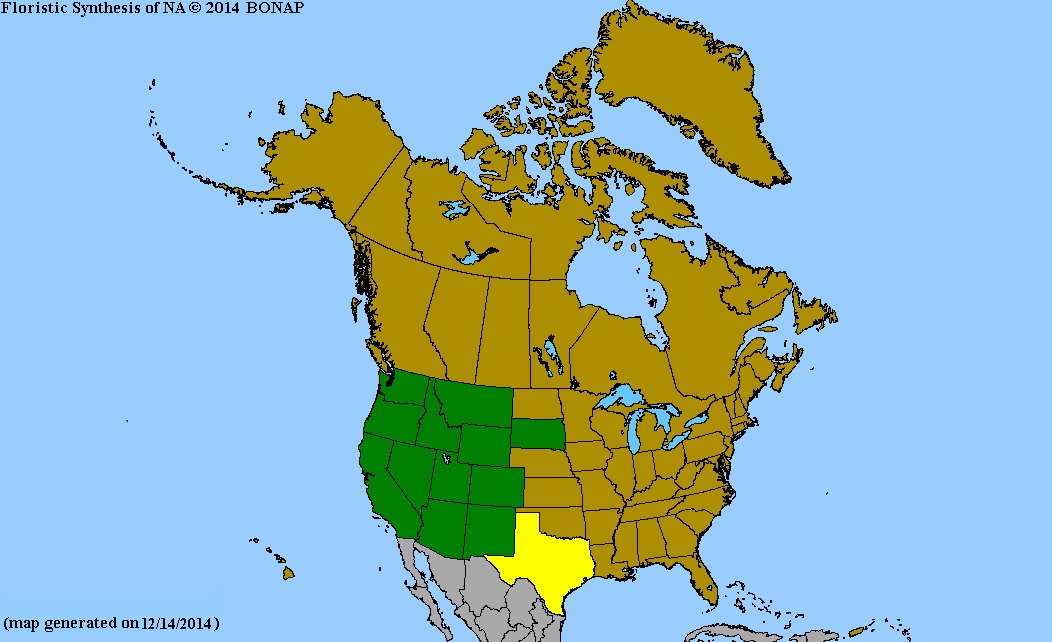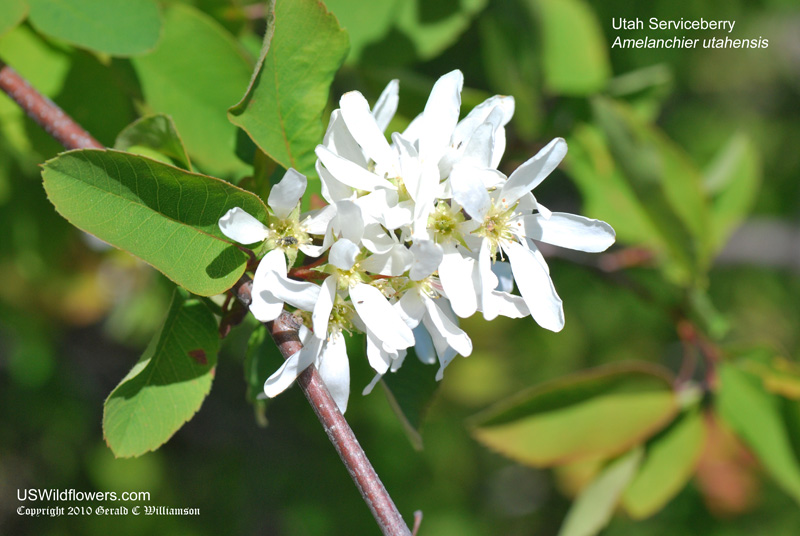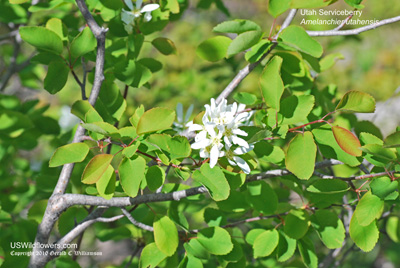Wildflowers of the United States | |||||||||||||
| |||||||||||||
Amelanchier utahensis - Utah Serviceberry, Pale Serviceberry, Western Serviceberry. The taxonomy of Amelanchier is a very confusing, not only to me but also to professionals. The genus has been divided into as few as 6 species and as many as 33. The USDA Plants Database currently lists 20 species with 28 total taxa. The University of Maine Department of Biological Sciences has excellent information about Amelanchier where they list 16 species and and 19 total taxa. ITIS lists 19 species.
| While the USDA lists four species of Amelanchier in Idaho, where these photos were taken, ITIS and the University of Maine have one of those classified as a A. alnifolia var. pumila, and another as a synonym of A. utahensis. Both of these species are relatively short and will usually have multiple stems, so most consider these to be shrubs rather than trees. A. utahensis -Utah Serviceberry - can be up to 15 feet tall. It will have 2 to 5 styles (A. alnifolia - Dwarf Shadbush - will have 4 or 5), 10 to 18 stamens (Dwarf Shadbush has 12 to 15), and the twigs are hairy at flowering and frequently so after flowering, while those of Dwarf Shadbush are usually without hairs at flowering. The final characteristic that swayed me to Utah Serviceberry for this identification are the number of lateral veins in the leaves. Utah Serviceberry has 7 to 13 (or more), while Dwarf shadbush will have 7 to 9. The fruit of Utah Serviceberry is edible, and is an important food for wildlife, as are the leaves. The foliage of this species shows up earlier than many other plants, providing browse early relatively early in the year. Found in: AZ, CA, CO, ID, MT, NM, NV, OR, TX, UT, WA, WY Leave comments on Amelanchier utahensis at this link.   Map courtesy of The Biota of North America Program. Map color key Search Our Database: Enter any portion of the Scientific, Common Name, or both. Do a general Google search of the entire site: #ad
| #ad
| | ||||||||||
|
Commercial / Cookie Notice Looking for Wildflowers for a specific state? Check here: | |||||||||||||
|
All content except USDA Plants Database map Copyright Gerald C. Williamson 2025 | |||||||||||||
Code Update 20230302


